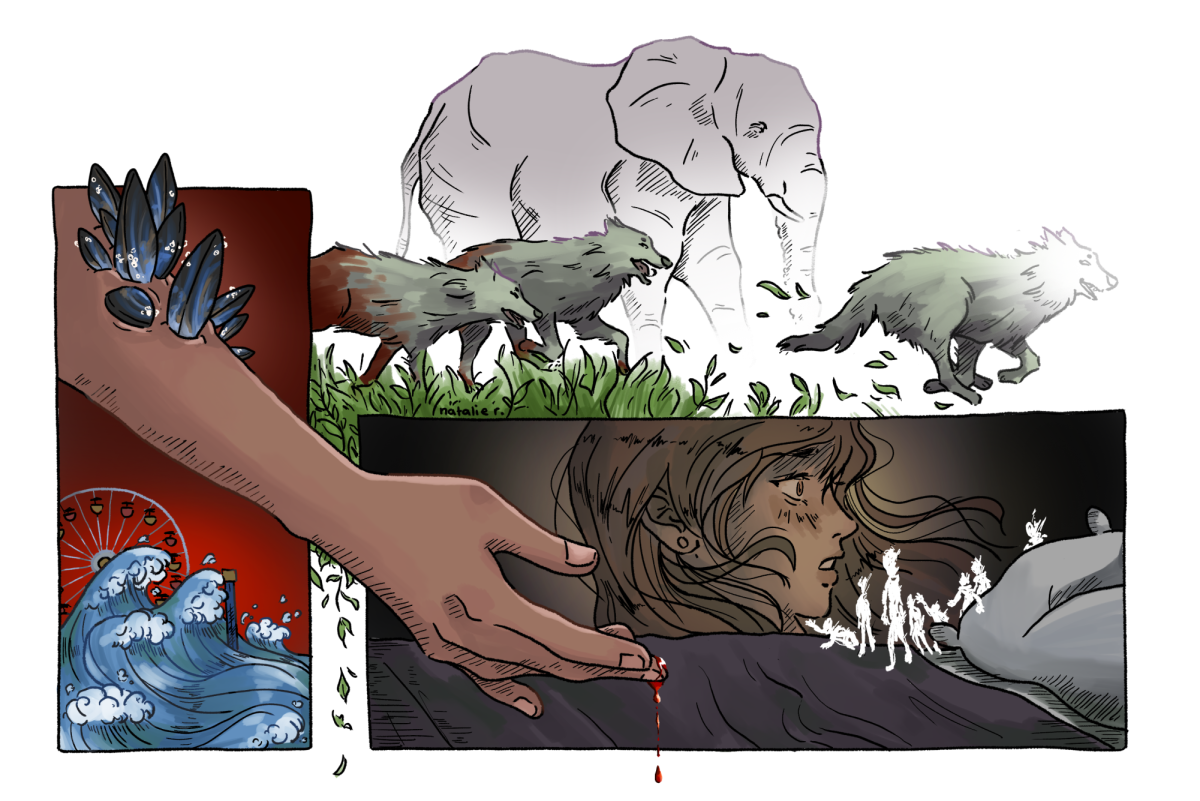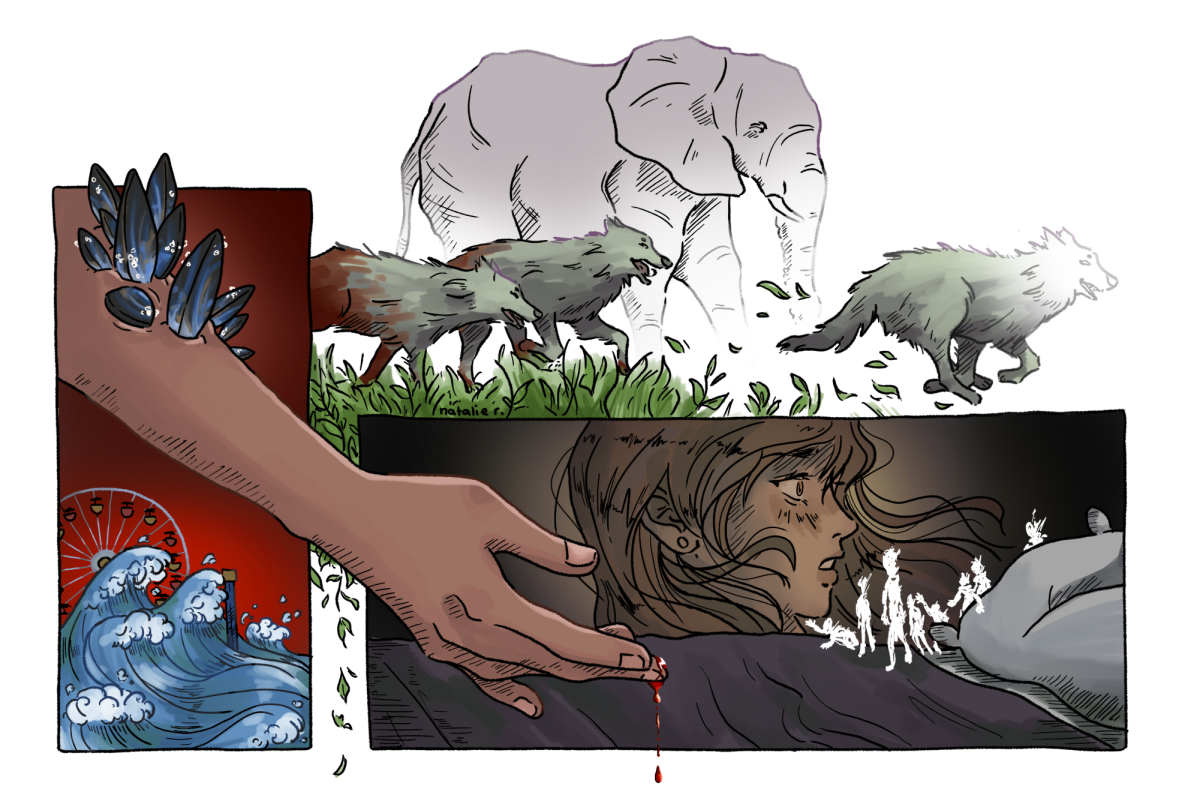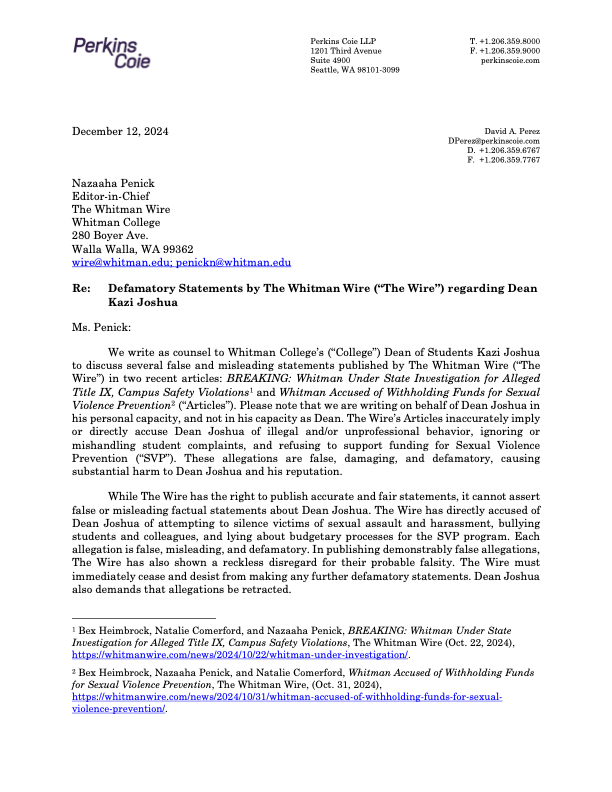As students lined up to put their dirty dishes in the dish room at Prentiss Dining Hall earlier this month, they were faced with one more extra step: scraping their excess food waste into a large bin, which was being managed by two encouraging Green Leaders. The first two weekends of November, the food conservation breakout group of the Green Leaders program staged a collection of students’ personal food waste, calling it “No-Waste November.”

During the first weekend, Nov. 5 and 6, the green leaders measured 50 lbs. of food waste on Saturday and 43 on Sunday. On the second weekend, Nov. 12 and 13, they collected 46 lbs. on Saturday and 36 lbs. on Sunday.
“It’s a good cause and something we could work on. Also, they cheered for me when I ate all my food. [The project] made dish collecting more joyful,” said first-year Evan Griffis.
The idea was born from a discussion the Green Leaders in the food conservation group had about where they saw the biggest waste of food on campus that they could have influence over. One answer was personal food waste.
“Someone will get a dish that isn’t quite to their taste and just throw an entire dinner away and get a second one or third one or just have eyes way bigger than their stomach,” said sophomore Lydia Bailey, who is the Green Leader in charge of the food conservation breakout group.
The goal of the project was to raise awareness of how much food students waste on an individual basis.
“Our goal was to shock the student body into seeing how much food is wasted just within one brunch period. We didn’t really want to advertise or anything, as a way to give us a more accurate representation,” said sophomore Kaylee Kautz, who is the Green Leader for Douglas Hall.
By scraping their food themselves, students were forced to have more accountability for their waste. This led to some interesting interactions.
“People would have an entire sandwich and be about to dump it in [the trash] and then grab it off the plate instead,” Kautz said.

Bon Appétit helped facilitate the project by connecting the group to the staff that supervises brunch mealtime, as well as providing them with the garbage can and food scale that was necessary. Bon Appétit was very supportive of the project since lower food waste is part of the “low carbon diet,” a larger initiative within the company.
In 2009 and 2010, the dining halls on campus surveyed the total amount of food wasted as part of a company-wide project. With a baseline amount of waste of about 4,000 pounds a week, the company was able to reduce food waste by 12 percent in 2009 and 10 percent in 2010.
“In the kitchens, the food waste seems like an awful lot, but a big chunk of that is we’re not buying processed food so we’re processing it here. We’ve got all those cantaloupe rinds, potato peels and everything else,” said Roger Edens, the general manager of Prentiss Dining Hall.
In an email, Edens also stated that the reduction of food waste was important because of what happens after it ends up in the landfill. Food waste in a landfill ends up creating methane gas, which has a 23-times greater impact on climate change than does carbon dioxide.
Bailey also stressed that reduction of food waste has a much bigger effect on sustainability than just turning off a light. According to Wastedfood.com, America wastes 40 percent of food produced for consumption.
“If we cut down our waste, we could potentially cut down the food we have to produce by 40 percent, which would allow us to practice more sustainable agricultural methods and have better food,” said Bailey.











